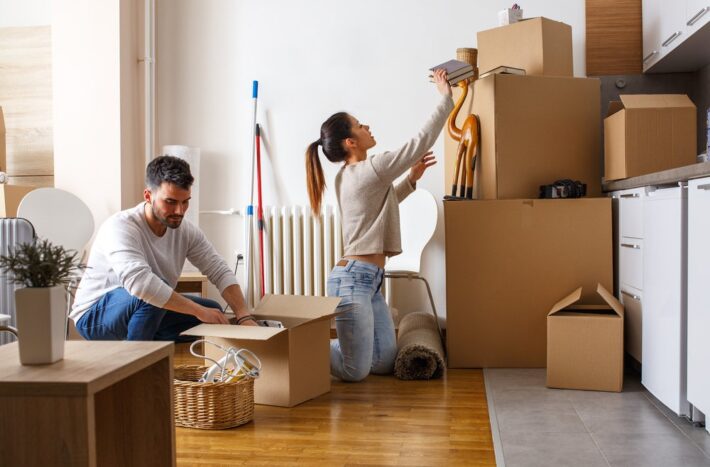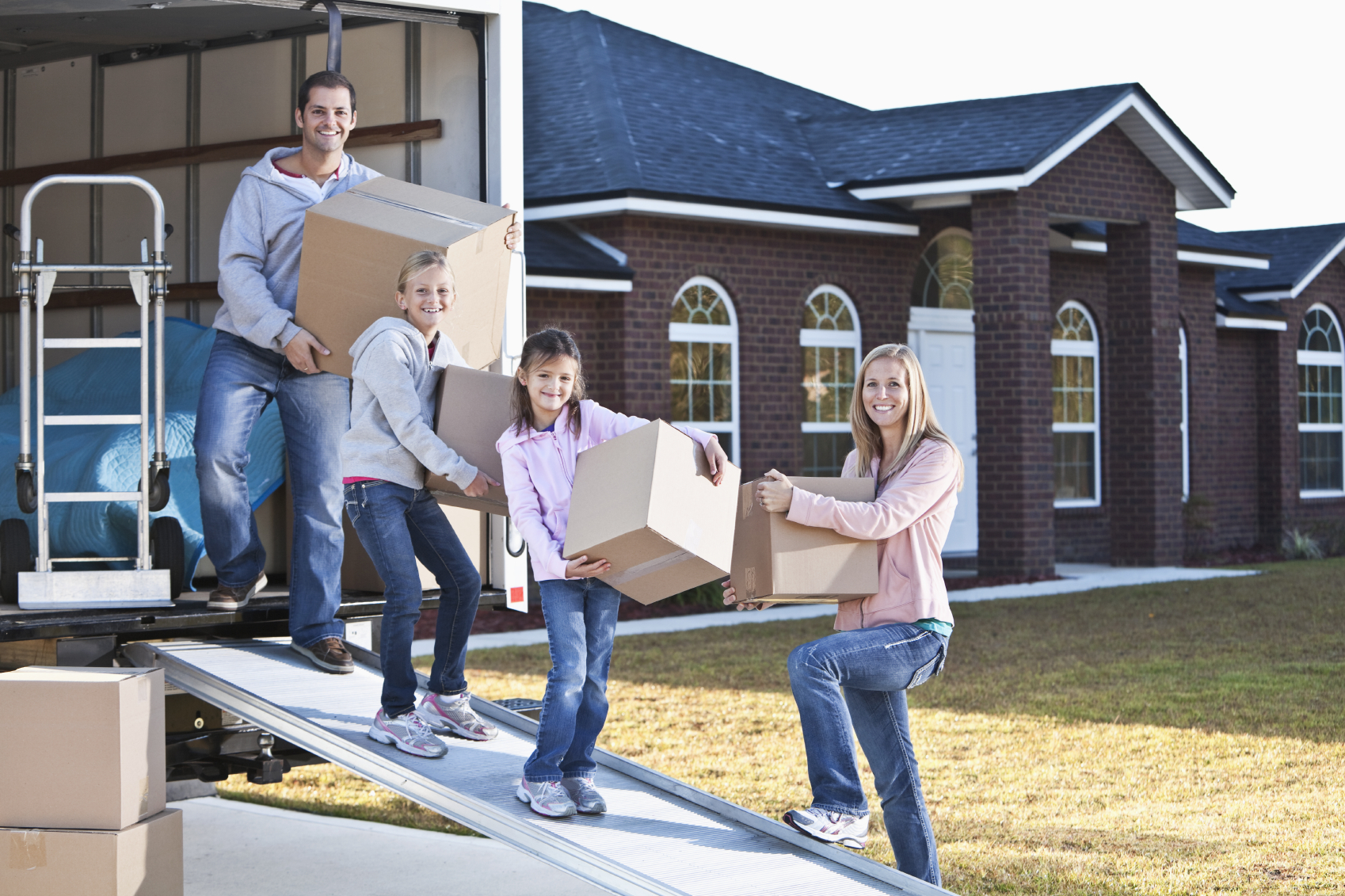As you pack, it’s easy to focus on everything inside your home and forget about what’s not—the outdoor furniture, grill, swing set, potted plants and everything else in the yard. To complicate things, many of these items require extra effort to pack or for you to make special arrangements to transport them. Packing the yard isn’t a task you want to tackle last minute on moving day. Use the following tips to help with packing your outdoor items for a move.
Getting started packing outdoor items for a move
Ideally, you’ll want to take an assessment of your yard several weeks before your move. Determine which items are worth moving. Are the wicker chairs on the patio falling apart? It’s easier to toss them now. What about the plastic turtle sandbox? It probably makes more sense to rehome it and buy a new one for $65, plus the cost of sand, than to try to move it.
Before you start disassembling and packing items, you’ll also want to consider what you have room for or need at your new home. Can your yard accommodate all of your current outdoor furniture, or do you need to donate or sell some of it? Do you have a lawn? If not, you might want to sell the lawnmower instead of moving it. What about a pool? You don’t need pool toys if you’re new home doesn’t have a pool.
Now that you’ve narrowed the items down to those you want to move, take some time to inspect and clean them. Make sure there are no bugs, spiders or pests in them. If they are particularly dirty, consider hosing them down or even scrubbing them with soapy water. Be sure to let them dry thoroughly so the boxes aren’t weakened by water damage or cloth items don’t mold.
What you’ll need to start packing outdoor items for a move
In addition to basic supplies like bubble wrap and packing tape, you may want to order several specialty boxes and plastic moving boxes to accommodate oddly shaped items or those that need a sturdy container. It’s helpful to have moving blankets and old towels on hand to wrap around items that need extra padding or have sharp edges. In general, you’ll need:
- Heavy-duty cardboard boxes in various sizes
- Plastic moving boxes
- Specialty boxes for odd-shaped items
- Packing paper
- Bubble wrap
- Moving blankets and old towels
- Plastic bags for small, loose items like screws
- Markers to label boxes
- Packing tape
- Garbage bags
Packing outdoor furniture
Packing outdoor furniture isn’t too complicated. Start by removing all cushions and padding. If you’ve washed these, make sure they are completely dry. (Let them sit in the sun for at least 48 hours.) Wrap the cushions and pads in a plastic garbage bag to keep moisture out during the move, press out all air from the bag and seal. Pack the bags in a large moving box, and label the box.
Most chairs, sofas, lounge chairs and tables can be moved as is. However, if you can disassemble a piece, do it. You can better protect it from damage if you disassemble it, and it will save room on the truck. As you disassemble your outdoor furniture, wrap each piece in old towels or bubble wrap and secure them with tape. Pack the pieces together, along with screws and fasteners in a sealed plastic bag, place them in a box and label.
Even if you can’t disassemble the furniture, some pieces require extra attention. For example, the glass top of a table should be removed and wrapped in bubble wrap and a thick furniture blanket to reduce the risk of it breaking during the move. You’ll also want to wrap the legs and arms of any pieces of outdoor furniture with sharp edges in bubble wrap, so they don’t scratch or damage other items during the move.
Packing a patio umbrella
Have a patio umbrella you want to move? Hose it down and let it dry, open, for several days before you intend to pack it. When you are ready to pack it, close the umbrella, and wrap it in plastic wrap (bubble wrap will work, too). Or, roll it in a moving blanket and secure it in several places with heavy-duty twine. Binding it like this will decrease the likelihood of it opening during the move.
Most patio umbrellas have a weighted base. Don’t pack it in a box since it may break through the bottom. Instead, load it on the truck as is.
Packing grills and smokers
Start by emptying any remaining charcoal or its residue out of your grill and/or smoker. If you have a gas grill, remove the propane tank. (It’s one of the items not allowed on a moving truck.) Remove the utensils, clean them and pack them. Grills and smokers alike will be greasy, charred and dirty with food remnants possibly stuck to the grates. Thoroughly clean them, inside and out, and let them dry.
Remove all detachable parts and place them in the same box as the utensils. If the lid can be lifted off, wrap it in bubble wrap or old blankets, and pack it separately. If it is attached, secure it with packing tape. Wrap the grill or smoker in a moving blanket and secure it as well. Since the wheels and handles make it easier to maneuver, leave these uncovered.
Packing swing sets and playsets
Moving a swing set or playset can be a little tricky if you haven’t held onto the directions for assembling it. Before you do anything, take photographs from different angles so you have a visual guide to look at when you try to reassemble it. Next, label each piece using a pencil or a piece of tape bearing the part’s name for other materials.
Unhook the swings; then remove the ropes, climbing nets, ladders and slides. Bag items like the swings or ropes, that could become tangled in other items. Label each bag. As you begin to dismantle the playset, put screws and fasteners in a small bag. Label it, and attach it to the corresponding part, if possible. Pack pieces that can be boxed into a box designated for the playset. If you break a piece while disassembling the playset, hold on to it because you’ll have to find a replacement.
Packing a trampoline
Depending on the size of the trampoline and where you are moving to, the easiest thing to do may be to rent a trailer and move it yourself. This way you don’t have to disassemble and reassemble it. Be sure to secure it to the trailer with ratchet straps.
If that’s not feasible, you can unstrap the pad from the frame (you’ll find the straps underneath the trampoline) and remove it. Release all the hooks holding the skin in place. Place these in a bag. Fold the skin and pad. Disassemble the frame. Wrap the poles in bubble wrap and secure them with tape.
Packing pots and planters
Many moving companies won’t transport your plants—they probably wouldn’t survive the trip anyway—but you can move your pots and planters. First, discard any potting soil and wash the containers, letting them dry completely. Then, treat them like any other fragile item. Wrap each in bubble wrap or old towels. Place the wrapped pots in a box, and label it.
If packing the items in your yard seems complicated or like too much work, don’t worry. You may be able to hire a moving to do it for you. Professional movers have experience packing outdoor furniture, grills and other backyard items as well as boxes, moving blankets and other necessary supplies. You can rest assured you’re outdoor items, like the rest of your belongings, will arrive in top condition when you hire a moving company.
Helpful Articles
Preparing for a Commercial Move
Why You Should Work With a Mover
Use a Mover Using Newer Software
Moving Software
The revolution of moving software
Transport tips Movingtruck Newhome



